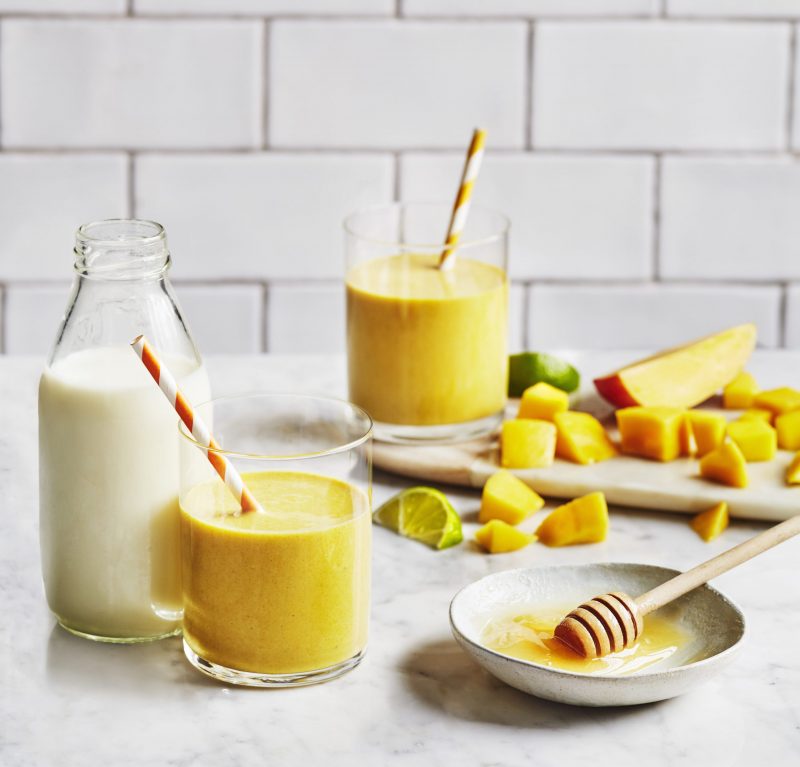8 Tips for a Healthy Lunch Box from Waitrose
Food & Beverage

August 25, 2020, 9:54 am
As children head back to school in the coming weeks, packing them lunches that are filled with healthy, delicious food has never been so important. The team at Waitrose knows that providing a nutrient-dense lunch while meeting the energy needs of a growing child requires a little thought. With these tips and product recommendations from Waitrose’s nutritionist, you should be able to make a healthy lunch box that is quick and easy to pack, but most importantly, eaten and enjoyed by your child.
Nicola Selwood, Waitrose nutritionist
- Aim for at least 1 of your child’s 5 a day
As a guide, a child’s portion is the amount of fruit or vegetable they can fit in their hand. Dried fruit counts too, such as raisins, but try not to include dried fruit too often as it is high in sugar. Perfect for the lunchbox are bananas, sliced grapes, satsumas and clementines, apples and pears, carrot sticks, cucumber and red pepper slices. If your child doesn’t touch their fruit and vegetables each day, you could try an alternative such as a fruit smoothie or a dried fruit snack, or why not try cutting melon into various shapes to tempt them. - Have a daily protein source
Protein is important for your child’s growth. Meat, fish, eggs and beans are great protein sources that can easily be incorporated into your child’s lunch box. Sliced chicken, egg mayonnaise or tuna are great sandwich fillers and sliced hard boiled eggs are a great source of protein which travel well in a lunch box. If you need a change from sandwiches, why not try adding mixed beans and tuna to a pasta salad. - Include a starchy food every day
Starchy foods provide energy and fibre and include bread, pasta, rice and cereals. Try to pick wholegrain varieties where possible to increase your child’s fibre intake. If your child isn’t keen on the wholegrain versions of bread, pasta and rice then try half ‘n’ half. Great examples are ‘best of both’ bread, mixing half white, half wholegrain for pasta and rice, or mixing high fibre cereals into regular cereals. As this food group usually makes up the biggest part of lunch, it’s important to vary it. Think about a wholemeal wrap one day, pasta salad the next or how about a bagel half or some sliced wholemeal pitta bread? - Add a daily portion of dairy to your child’s lunch box
Dairy foods are an excellent source of calcium which is important for your child’s growing bones. Milk is the top choice to have as a drink for lunch, but yogurts and cheese sticks are great additions to your child’s lunch box. You could include cheese as the sandwich filling or low fat cream cheese as a dip for vegetable sticks. If you choose dairy alternatives such as soya milk or yogurt, pick varieties that are fortified with calcium. Other non-dairy sources of calcium include dried fruits, particularly figs and apricots. Try to encourage your child to end their lunch with a piece of cheese as this can help protect teeth from acid erosion. - Try to include oily fish now and again
Oily fish is a great source of Omega 3 fats. Salmon and mackerel make great sandwich fillers or as an accompaniment to pasta or rice. If your child refuses to eat oily fish (most do!) then you could try Waitrose Omega 3 eggs. And don’t worry if you can’t get Omega 3 sources into your child’s lunch, just remember to include it in a meal at home or consider a supplement as children’s versions are available. - Pick healthier snacks over crisps
Some schools have a ban on crisps so it’s good to know there are some tasty alternatives available. Healthier products include breadsticks, crackers, rice cakes and vegetable sticks with houmous to name but a few. If your school does allow crisps, then opt for reduced salt versions or try unsalted.
You can even get lentil crisps and baked vegetable crisps for a healthier crunch. Savoury mixed seeds are a great alternative, but do check your school’s allergen policy as some mixes contain sesame seeds. - Keep sausage rolls and pies as an occasional treat
These products are often high in saturated fat so need to be kept to a minimum rather than a regular lunch box item. If you want to include them in your child’s lunch box, opt for the mini versions. - Confectionery & chocolate aren’t usually allowed
Cakes & biscuits are often allowed but it’s a good idea to opt for the healthier ones, such as reduced sugar biscuits or cakes and keep the portions on the small side.
About Waitrose & Partners
Waitrose & Partners has 349 shops in England, Scotland, Wales and the Channel Islands, including 61 convenience branches, and another 27 shops at Welcome Break locations. It combines the convenience of a supermarket with the expertise and service of a specialist shop – dedicated to offering quality food that has been responsibly sourced, combined with high standards of customer service. Waitrose & Partners is an employee-owned business – all employees are Partners and have a say in how the business is run.
Waitrose & Partners exports products to more than 50 countries worldwide and has nine shops which operate under license in the Middle East. The retailer’s omnichannel business includes the online grocery service, Waitrose.com, as well as specialist online shops including waitrosecellar.com for wine and waitroseflorist.com for plants and flowers.










